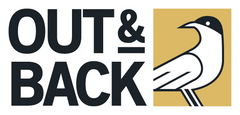What’s the Best Way to Get Rid of Your Old Gear?

Whether you’re upgrading to something new, no longer need what you have or are just doing some spring cleaning - the decision to sell, donate or get rid of a piece of outdoor gear isn’t always an easy one. You’ve spent time with that gear, you’ve had fun with it, it may have saved your @ss a few times… However, once you’ve made the decision to get rid of the gear, you may be wondering what the best way to do so is. Here are a few tips:
You can sell almost anything but don’t expect a great price on everything…
You can sell just about any outdoor gear on secondhand gear websites (e.g. geartrade.com, etc.) or peer-to-peer markets (e.g. eBay, Mercari, etc.) but certain items will bag you more money than others. The basic rule of thumb is the further away the item is from your skin the more money you can sell it for. For example, consider a merino wool base-layer and a hiking backpack - both purchased for $100 each. You can expect to sell the backpack for around 50% of the original price in either peer-to-peer markets or secondhand gear websites. However, when it comes to that base-layer, if you get greater than 40% of the original price you should count yourself very lucky. The next-to-skin rule is an even bigger factor when that skin is on your feet. For example, trying to sell ski boots for more than 25-30% of original sales prices will be difficult and don’t even try to sell socks - no one is going to buy them.
In general, selling used outdoor gear that touches your skin has a sales ceiling of around 50% of MSRP unless there is a third-party that is guaranteeing the product quality, performance and cleanliness.
What sells for a lot? Luggage is one category that does really well maintaining around 50-70% of its original value. In large part this is because it's not a trend item (meaning color and things like that don’t play a big role in its appeal) and its “eww” factor is pretty low. Hard goods like bikes, skis, etc. can also sell for a lot however these sales tend to go down face-to-face or via websites that guarantee quality and performance as most buyers are skeptical to purchase these items sight-unseen.
People buy used outdoor gear at the same time they buy new gear
This may seem obvious but from a seller's perspective, it's not always… Most people who are selling used outdoor gear think to do so at the end of a season when they’re done using it. For example, you see a ton of ski jackets pop up on eBay in the spring. However, in that example, people who are buying used ski jackets typically don’t look for them until the fall when they’re thinking about the upcoming ski season - just like if they were shopping new. The difference between selling behavior and buying behavior in secondhand markets often causes a mis-match is supply and demand leading to lower sales prices on the part of sellers and more frustration on the part of buyers. The key takeaway here is to sell your outdoor gear at the time that’s most logical for others to buy it, not when it's most convenient for you to sell it.
Donating gear is a great option if you can
If you can afford to give away outdoor gear that you aren’t using anymore it can make a huge difference in your community and you should do it! Churches, Boys & Girls Clubs and other local organizations will often gladly take your still-functioning gear and put it toward continued use. That said, if you don’t have time to find a local spot to donate your gear there are national organizations that will help you to donate your stuff. REI and Goodwill partnered to create the Give Back Box where they will pay for shipping on your donation of used outdoor gear. Gearforward is another organization that will help you donate your used outdoor gear in a way that helps get into the hands of kids who can’t afford to purchase it on their own. Either of these are a great option if you can afford it.
Don’t throw it away, no matter how damaged it is…
The jacket is ripped… The bike frame is cracked… The bindings are broken… It doesn’t matter, DON’T THROW IT AWAY, someone will take it. Trust us on this. Never assume that your gear is worthless because it's not even if that gear isn’t in working condition. There is always someone who’s looking for spare parts or swatches of fabric to fix something that they own. You may not be able to sell that gear but that doesn’t mean that it can’t find a new home and a second life. List the item on Craigslist, NextDoor or Facebook Marketplace for free, be honest about its condition and someone will come pick it up. The same rules apply here as above - it's more likely that someone will grab it from you in the appropriate season as that’s probably when they noticed that what they have isn’t working and donating the item may also be an option.


